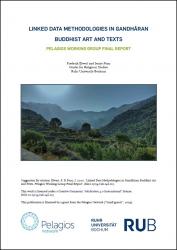Linked Data Methodologies in Gandhāran Buddhist Art and Texts: Pelagios Working Group Final Report
Synopsis
The Working Group “Linked Data Methodologies in Gandhāran Buddhist Art and Texts” explores potential uses of Linked Open Data principles in bridging different collections of Gandhāran Buddhist resources extant in both textual and visual media. The team includes art historians and archaeologists, philologists and historians of Buddhism as well as experts in Digital Humanities from various research institutions across North America and Europe who have decided to combine their expertise to propose means to foster interoperability between repositories and ultimately, to advance our knowledge of Buddhism in Gandhāra.
The result of the discussion, presented here, is a set of guidelines that should help in planning and implementing future collection management systems. These guidelines abide to the following basic principles: 1. bridging diverse collections 2. a progressive enhancement approach 3. incremental changes into existing databases. With this goal in mind, a set of four vocabularies – Places, Motifs, Narratives, and Persons – to which stable identifiers will be attributed has been defined. For each, we identify best practice models that teach us how to model the information and we list a very limited set of primary sources that give us information about what we want to model.
The Working Group “Linked Data Methodologies in Gandhāran Buddhist Art and Texts” and the resulting publication are financed by a grant from the Pelagios Network (“Small grants”, 2019).
Suggestion for citation: Elwert, F. & Pons, J. 2020. ‘Linked Data Methodologies in Gandhāran Buddhist Art and Texts. Pelagios Working Group Final Report’, doi10.13154/rub.148.125.


